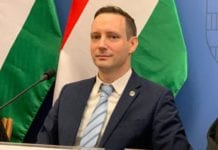
By Martin Roth, BosNewsLife Senior Columnist
ISTANBUL, TURKEY (BosNewsLife Columns)– Attacks on an ancient Syriac church in Turkey constitute another blow to Aramaic, the language that Jesus spoke. The World Council of Arameans says fighting in late-January between the Turkish army and Kurdish militia groups in the south-eastern city of Diyarbakir has caused “many deaths” and extensive damage.
Diyarbakir, with a population of more than 900,000, formerly boasted a flourishing Aramaic-speaking Christian community, but this number has declined sharply over the past 100 years. That city is home to the Syriac Orthodox St Mary Church, which dates back to the third century and was once a center of learning for the Aramaic language. The denomination also attracted some of the Eastern church’s most famous patriarchs and theologians.
Its priest, Father Yusuf Akbulut, stayed in the church until the last possible opportunity, before fleeing. “When we escaped, we saw so many streets completely destroyed,” he reportedly said. “Our hometown was unrecognizable and it looked like a war zone. We don’t know what has happened to our church, because we didn’t dare to look while we were running for our lives,” the priest added in a press release.
And he warned: “Now we have little hope left that there can be a future for us, Aramean Christians, to stay in the land of our forefathers.”
WALLS FALLEN
Subsequent reports stated that parts of the church walls have fallen.
Aramaic was, at the time of Jesus, the most common language of the Middle East, and it remained widely spoken, particularly among Christian communities, for many hundreds of years.
But recent decades have not been kind to the language.
Younger generations in the Middle East, even if they grew up with Aramaic, often ended up mainly using Arabic, the dominant tongue.
Additionally, there has been a steady exodus from the Middle East of Aramaic speakers – intensified over the past few years with the attacks of the Islamic State group– with many moving to the West.
MINI REVIVAL
Ironically though, the language is seeing something of a mini-revival in an unexpected part of the region – in Israel.
Gush Halav – known in Arabic as Jish – is a small town in the Galilee Valley, in northern Israel. More than half the population are Maronite Christians, and they still use Aramaic in their church liturgy, and even often speak it.
Since 2011, under the auspices of the Israeli Ministry of Education, Aramaic has been taught in the town’s schools.
And in 2014 the Israeli government recognized the country’s 20,000 Aramaic people as a distinct nationality.
It’s a sign of hope. But will it be enough?
Some experts claim that Aramaic will disappear as a living language by the end of the century. That would be a bitter blow, though it pales into insignificance when compared to a more distressing looming tragedy: Can Christianity itself continue to flourish in the Middle East until the end of this century?
 (Martin Roth (www.authormartinroth.com), BosNewsLife’s Senior Columnist and Special Correspondent is a respected Australian journalist and former Tokyo-based foreign correspondent. He is the author of “Journey Out Of Nothing: My Buddhist Path to Christianity” and of the Brother Half Angel series of thrillers, which focus on the persecuted church. BosNewsLife Columns distributes opinionated columns and commentaries providing a fresh perspective on issues in the news. They do not necessarily reflect the opinion of BosNewsLife News Agency or its parent company.)
(Martin Roth (www.authormartinroth.com), BosNewsLife’s Senior Columnist and Special Correspondent is a respected Australian journalist and former Tokyo-based foreign correspondent. He is the author of “Journey Out Of Nothing: My Buddhist Path to Christianity” and of the Brother Half Angel series of thrillers, which focus on the persecuted church. BosNewsLife Columns distributes opinionated columns and commentaries providing a fresh perspective on issues in the news. They do not necessarily reflect the opinion of BosNewsLife News Agency or its parent company.)








